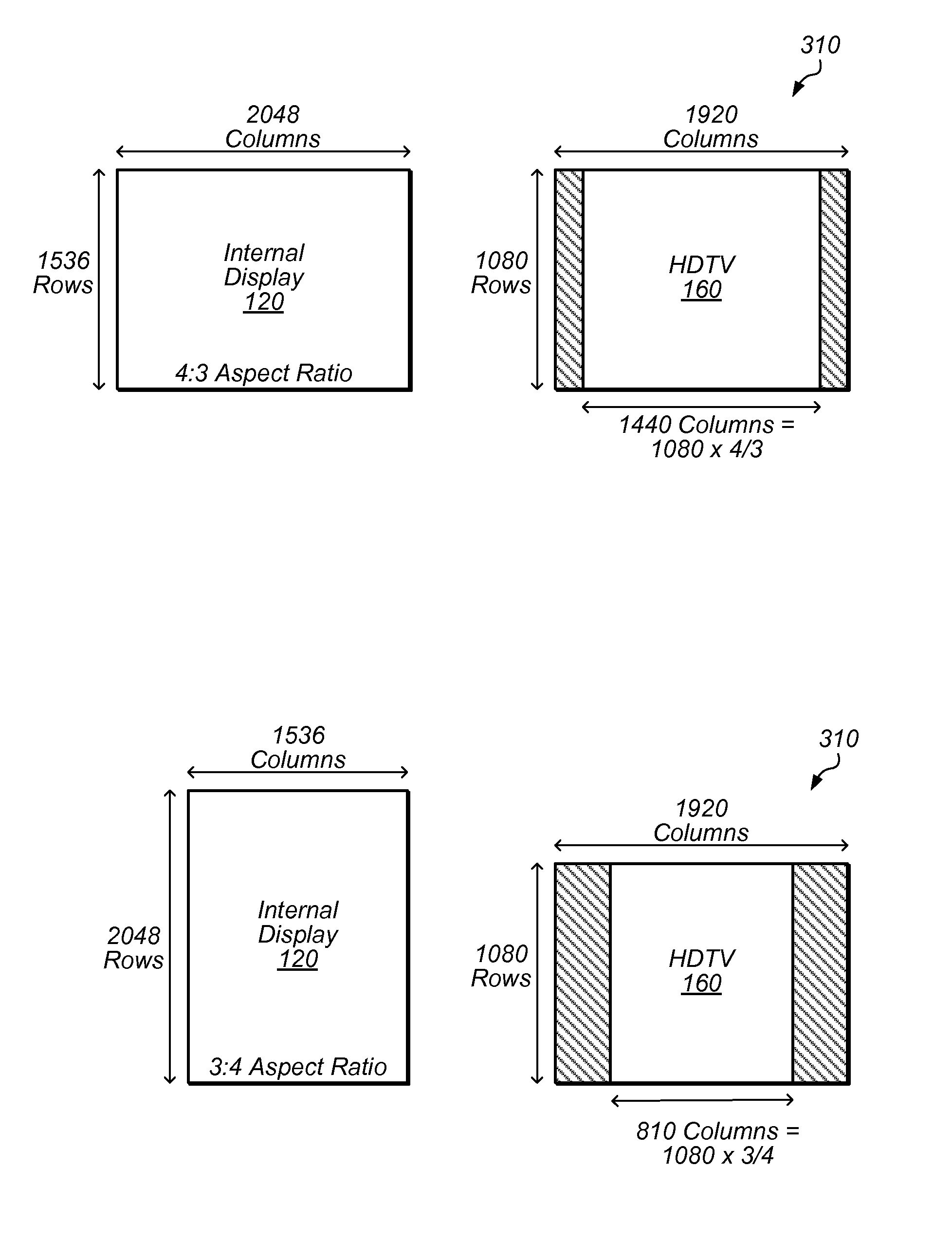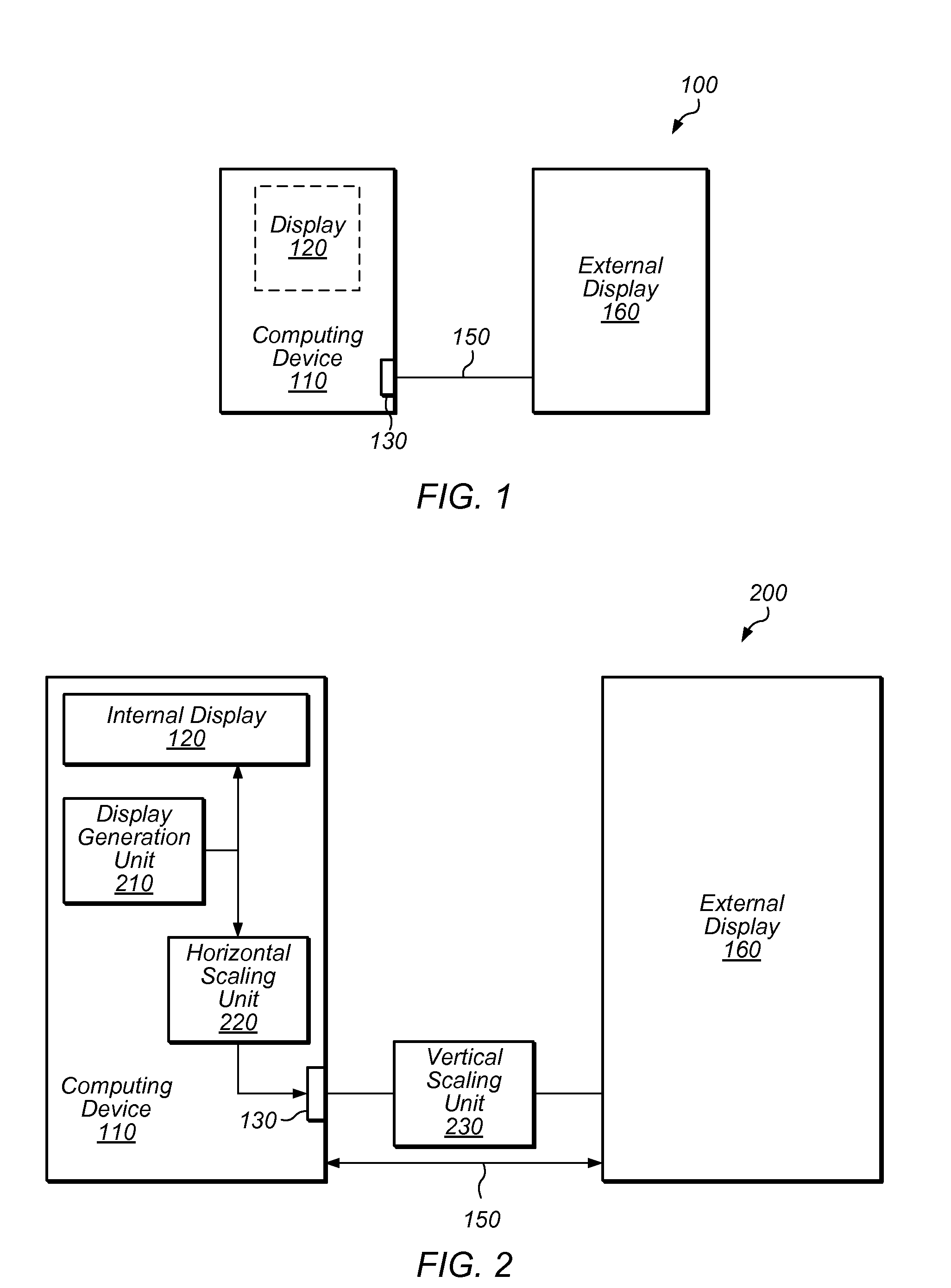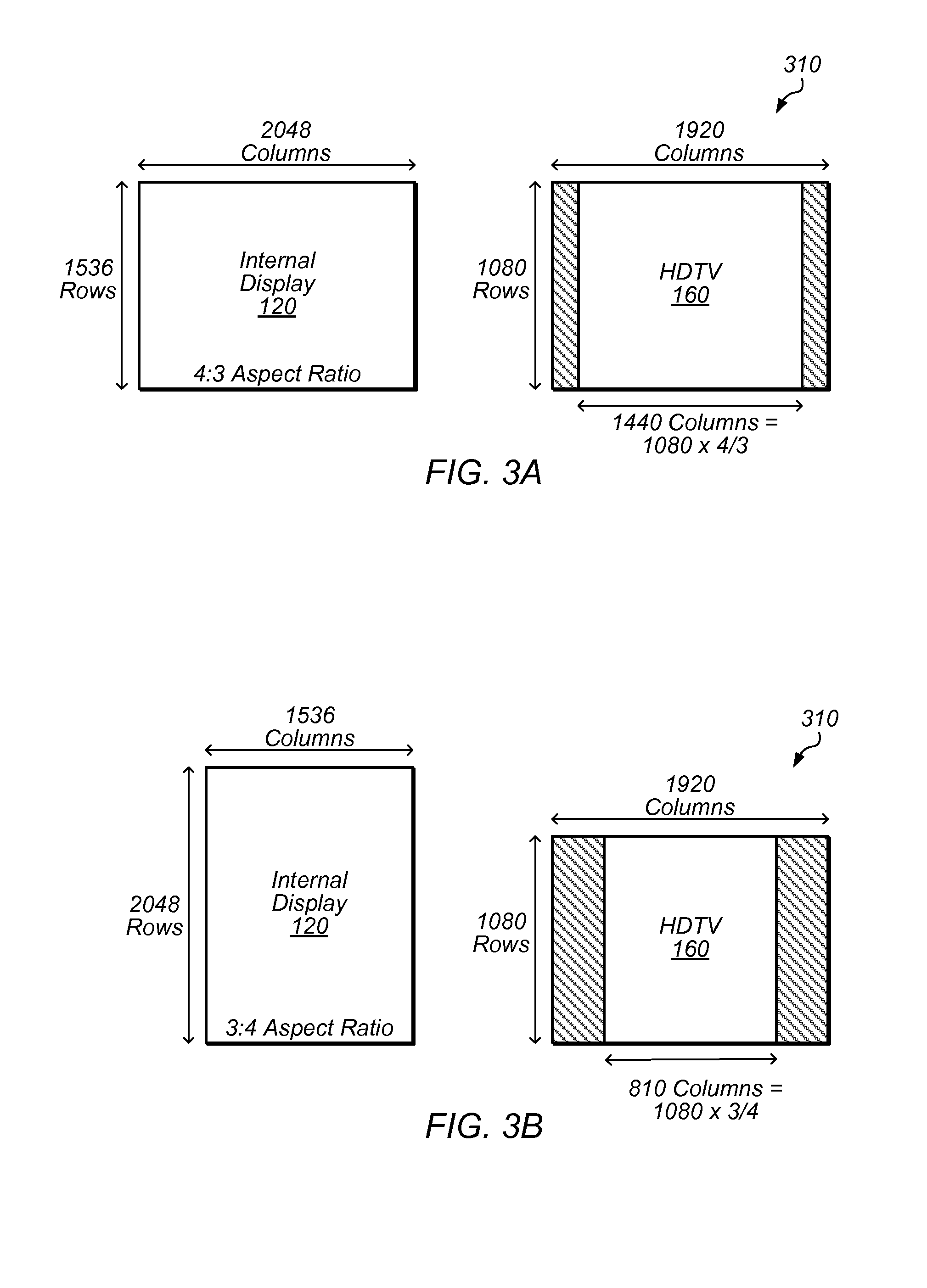Frame retiming for mirror mode
- Summary
- Abstract
- Description
- Claims
- Application Information
AI Technical Summary
Benefits of technology
Problems solved by technology
Method used
Image
Examples
Embodiment Construction
[0031]Turning now to FIG. 1, a block diagram of a computer system with multiple displays is shown. Computer system 100 includes computing device 110, which may be any suitable type of computing device. In one embodiment, device 110 is a tablet computing device such as an IPAD product.
[0032]As shown, device 110 is coupled to display 120. In one embodiment, display 120 is integrated or internal to computing device 110. This display may be referred to as the “primary” display of device 110. In some embodiments, primary display 120 may be connected to device 110 through an external interface. Display 120 is represented with a dotted line in FIG. 1 to indicate that it may be located either internal or external to device 110. As used herein, a display refers to any device that is configured to present a visual image in response to control signals to the display. A variety of technologies may be used in the display, such as cathode ray tube (CRT), thin film transistor (TFT), liquid crystal...
PUM
 Login to View More
Login to View More Abstract
Description
Claims
Application Information
 Login to View More
Login to View More - R&D
- Intellectual Property
- Life Sciences
- Materials
- Tech Scout
- Unparalleled Data Quality
- Higher Quality Content
- 60% Fewer Hallucinations
Browse by: Latest US Patents, China's latest patents, Technical Efficacy Thesaurus, Application Domain, Technology Topic, Popular Technical Reports.
© 2025 PatSnap. All rights reserved.Legal|Privacy policy|Modern Slavery Act Transparency Statement|Sitemap|About US| Contact US: help@patsnap.com



